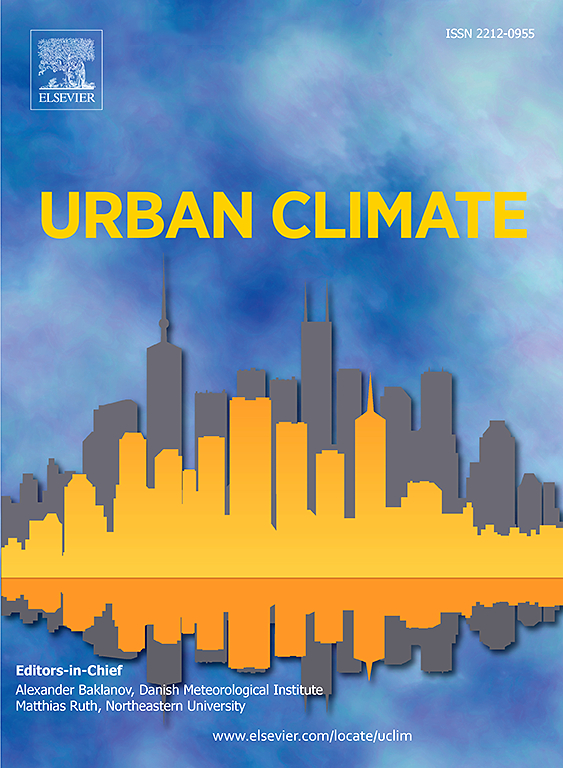利用长期移动监测对路面空气污染进行空间预测:德里的启示
IF 6
2区 工程技术
Q1 ENVIRONMENTAL SCIENCES
引用次数: 0
摘要
城市活动密度的迅速增加推动了密集空气质量监测网络的建立。在缺乏密集的空气质量监测网络的情况下,使用低成本空气质量设备的移动监测为捕捉污染物的时空变化提供了一种有价值的方法。很少有研究提倡使用线性和非线性模型,而其他研究则利用机器学习(ML)模型进行空间预测。但是,在现有研究中的应用仅限于较短的时间和较小的区域。此外,对这些模型的选择的理解是缺失的。这项研究使用了德里公共汽车上安装的15个低成本空气质量设备的PM2.5浓度,历时8个多月,比较了不同型号的性能。PM2.5数据是在1110个路段的中点汇总的。在预测模型中使用了表现出时空变化的各种预测变量。在线性模型中,训练数据集的R2最高(0.61),在ML模型中,极端梯度增强的R2最高(0.98)。温度、湿度、建筑面积、建筑高度、道路长度和交通信号是主要影响因子。ML模型在所有模型类别中表现更好,而线性模型在训练和验证R2之间的差异较小。此外,线性模型比非线性模型和ML模型具有更好的预测一致性。这些结果证实了机器学习模型的高性能,并展示了通过将数据分成更小的时间桶和包括更多的道路段来提高预测精度的潜力。本文章由计算机程序翻译,如有差异,请以英文原文为准。
Spatial prediction of on-road air pollution using long-term mobile monitoring: Insights from Delhi
A rapid increase in the density of urban activities nudges for a dense air quality monitoring network. Mobile monitoring using low-cost air quality devices provides a valuable method for capturing spatiotemporal variations of pollutants in the absence of a dense air quality monitoring network. Few studies advocated using linear and nonlinear models, whereas others have utilized machine learning (ML) models for spatial prediction. However, the application in the existing studies is limited to a shorter period and smaller area. Additionally, an understanding of the selection of these models is absent. This study uses concentrations from 15 low-cost air quality devices deployed in buses in Delhi for over eight months to compare the performance of different model categories. data is aggregated at the midpoint of the 1110 road segments. Various predictor variables, which exhibit spatiotemporal variations, are used in the prediction models. Among the linear models, Backward Stepwise Regression achieved the highest R2 (0.61) for the training dataset, and among ML models, Extreme Gradient Boosting exhibits the highest R2 (0.98). Temperature, humidity, built-up area, building height, road length, and traffic signals are the main influencing predictor variables. ML models perform better among all model categories, whereas linear models have a smaller divergence between training and validation R2. Additionally, linear models have better prediction consistency than nonlinear and ML models. These results confirm the high performance of ML models and exhibit the potential for improving prediction accuracy by splitting the data into smaller time bins and including more road segments.
求助全文
通过发布文献求助,成功后即可免费获取论文全文。
去求助
来源期刊

Urban Climate
Social Sciences-Urban Studies
CiteScore
9.70
自引率
9.40%
发文量
286
期刊介绍:
Urban Climate serves the scientific and decision making communities with the publication of research on theory, science and applications relevant to understanding urban climatic conditions and change in relation to their geography and to demographic, socioeconomic, institutional, technological and environmental dynamics and global change. Targeted towards both disciplinary and interdisciplinary audiences, this journal publishes original research papers, comprehensive review articles, book reviews, and short communications on topics including, but not limited to, the following:
Urban meteorology and climate[...]
Urban environmental pollution[...]
Adaptation to global change[...]
Urban economic and social issues[...]
Research Approaches[...]
 求助内容:
求助内容: 应助结果提醒方式:
应助结果提醒方式:


